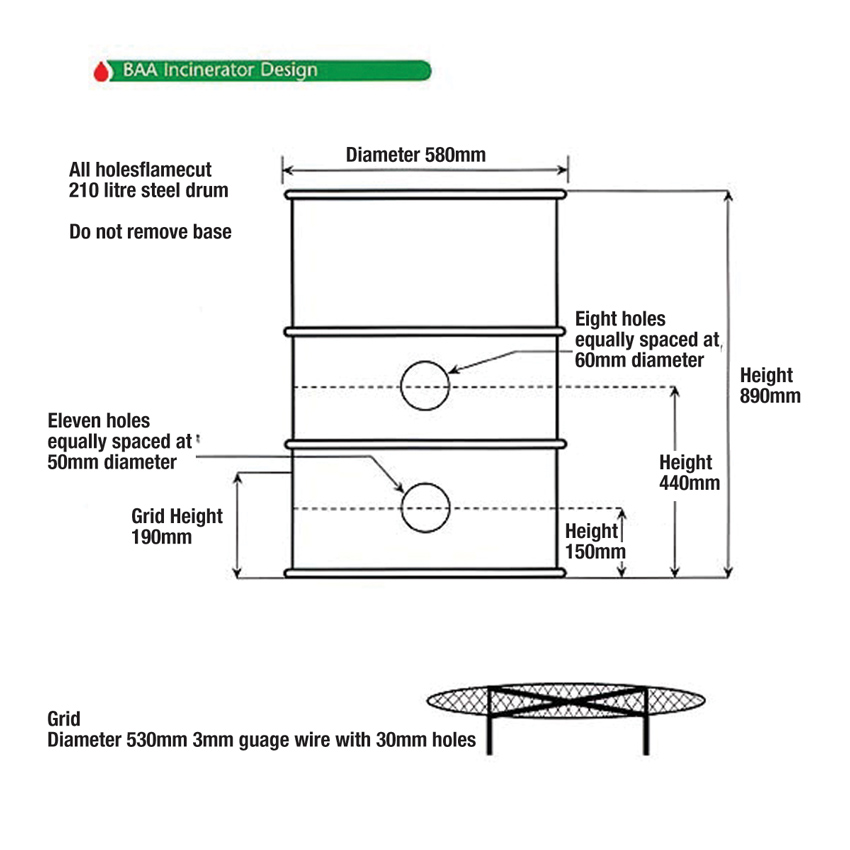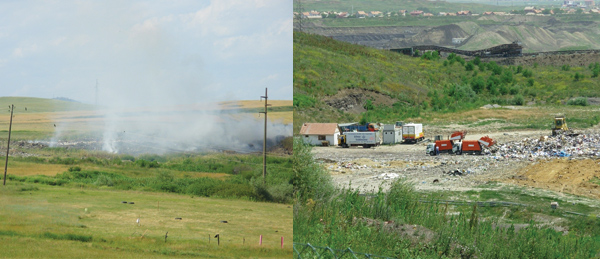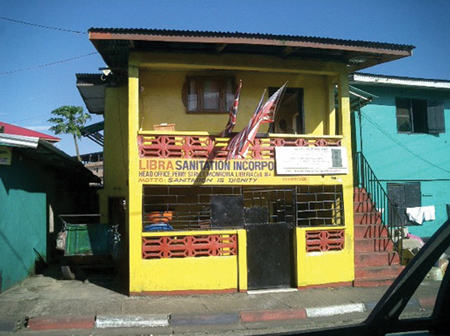Waste management in developing countries is more challenging than in developed countries because dumps and landfills are the general choice for disposing of solid waste because these are the cheapest options. This article provides several short case studies from my experiences and observations in Africa, Asia, Middle East, and Eastern Europe over the past 30 years.
By Barney P. Popkin
The vast majority of people on earth live in developing countries within Africa, Asia, Eastern Europe, Latin America and the Caribbean, and the Middle East. Their annual household incomes are a fraction of that of Americans, Western Europeans, Australians and Japanese (CIA World Factbook).
Developing countries are categorized as low, moderate to high income, based on GDP/PPP. They have at least three things in common: 1) Poor governance; 2) Low percentage of income-earning women; and 3) Inability to self-fund their infrastructure. Even the higher end BRIC (Brazil, Russian, India, China) countries and Four Asian Tigers (Hong Kong, Singapore, South Korea, Taiwan) have these limitations to some extent. Consequently, from my observation and others, most of their municipal solid waste management facilities are open, uncontrolled and unlined dumps and low-cost, unlined landfills without leachate collection systems (Tchobanoglous and Kreith, 2002).
Whenever I see or inspect a waste management facility, I ask myself if they are technically compliant with NEPA/CEQA, RCRA/ HSWA, CERCLA/ SARA, EPCRA, EPA and OSHA guidelines (see Major U.S. Regulations and Agencies Regarding Landfills sidebar, page 73). They usually are not. Moreover, their landfills generally do not capture its methane gas for fuel use. For these inspections, I usually prepare and use RCRA-type checklists, which involve requirements for design, construction, management, and control of municipal solid waste landfills based primarily on the information provided to me by the client and any documents such as 22CFR216 documentation (initial environmental evaluations, decisions, scoping statements, assessments, etc.).
Waste management is more challenging in developed countries because there are generally no robust taxing, tariff, fee-for-service, and loan and debt service regimes to support its infrastructure. Developing countries generally do not have the relatively high air emission standards to fund. Thus, such countries depend largely on international donors and modest national support. In general, paper and cardboard wastes are burned before being collected and disposed, and metallic discards (iron, copper, aluminum, zinc and lead) are collected for recycling. Some facilities, including cafes, restaurants and resorts, are careful to collect food wastes to convert to compost or use as animal feed. Others make an effort to reuse and recycle whatever is possible, even if inappropriately reusing sugar, pesticide, and lime bags to contain foods, feed, and construction materials, and plastic bags and soft-drink bottles to contain gasoline.
Lead recycling is also problematic in developing countries. In several large cities, youth collect discarded vehicle batteries to recover lead. The lead is melted on kitchen stoves, poured into wood molds, and sold for further recycling. Unfortunately, lead vapors when inhaled cause neurological stresses and diseases. It has been a long-time U.S. government policy to test American workers in U.S. Embassies and Foreign Assistance Missions for blood or hair lead levels, and remove them from the exposure countries for several weeks until their lead levels return to normal. I’ve encountered this in Cairo, but was assured that other large urban cities in Asia and the Middle East suffer this challenge as well. For example, several decades ago, approximate 50,000 Taiwanese were inadvertently injured from arsenic poisoning which they received from raw rice stored in re-used pesticide bags. Consequently, the EPA revisited its drinking water standards for arsenic. Given the aforementioned arsenic pesticide poisoning incident in Taiwan, foreign aid promoted the use of a pesticide-bag burner (CNFA-AFSA 2010) (see Figure 1).

This article provides several short case studies from my experience in Africa, Asia, the Middle East and Eastern Europe over the past 30 years. These cases are in no way intended to characterize the plethora of global waste management practices, but only to what I have observed as an American environmental engineer on the job or assignments for several agencies and organizations.
Moreover, there is no intent to provide global benchmark costs for wastewater management. But note that open, uncontrolled and unlined dumps and low-cost, unlined landfills without leachate collection systems have the lowest direct capital on operations and maintenance costs, while incinerators and moreover waste-to-energy incinerators have significantly higher costs (Wu, 2018; Artz et al, 2002, Hogg, 2002; Tchobanoglous and Kreith, 2002). Even developed countries cannot directly afford these waste management systems without subsidies.
Afghanistan
In 2005, as part of my project monitoring and evaluation, I visited a community services governing group meeting in a peri-urban Kabul mosque who managed their community solid waste collection and landfilling operation. The group kept accurate records and received modest user fees plus funding from international donors. A remarkable aspect of my visit was learning that widows, orphans and others who could not afford the modest fees were nonetheless covered by increased fees imposed upon those who could afford a slight fee increase. As it was, everyone in the community was covered. I also saw several medical waste burners that had uncontrolled burns, doubtlessly adding dioxins to the ambient air.

Bangladesh
In 2005, as part of an environmental protection training service and project monitoring and evaluation for a foreign aid program, I visited a medical center with a small medical waste burner which had uncontrolled burns, doubtlessly adding dioxins to the ambient air.

Cambodia
I visited Cambodia in 2006 to provide environmental protection training and to monitor and evaluate foreign aid projects. During this work, I made several observations on rooftop water harvesting, and donor-funded medical and education programs while traveling to Angkor Wat and Phnom Penh, and within Phnom Penh.

Egypt
As part of an environmental protection training service and project monitoring and evaluation for a foreign aid program, in 2006, I visited the Zabelines Village in Cairo. The Zabelines were Christian pig farmers from Alexandria who migrated to Cairo and established a large free waste hauling and multidisciplinary waste reuse, recycling, and reformatting economy. With the help of international donors, the Zabelines incorporate waste management in school mathematics, science and art. A typical mathematics question might look like this:
Two vehicles arrive in the materials recovery yard. The diesel truck contains 400 kg of discarded materials, including 5% Fe rods, 4% Cu wires, 3% Al cans, 2% Pb bars, and 1% Zn ingots. The donkey cart contains half the weight of the truck’s discarded materials, but twice the percentage of Fe, Cu, Al, Pb and Zn. Assuming unloading, sorting, washing, and refining costs are insignificant, which load is more valuable and why? Show your work assuming metal commodity prices you find online.

Indonesia
In 1994, as part of an environmental master plan project, I visited a large, unfenced, unsorted, open landfill dump in Batam, which was inhabited by unauthorized settlers or squatters who made their living from scavenging the dump for collection and sales of reusable and recyclable materials, primarily textiles and metals. There were several illegal and illicit activities in the squatters’ shacks. The dump was on perpetual fire, rats in abundance and mixed wastes including radioactive, medical, asbestos, hazardous materials, food, glass, plastic, etc.
I also visited a hospital with a medical waste burner which had uncontrolled burns, collecting flue gasses, and doubtlessly adding dioxins to the ambient air. The flue-gas wastes were mixed into the vegetable garden soils, adding heavy metals to the green vegetables produced therein, and consumed by hospital patients and staff.
Jordan
In 2014, I visited Jordan to evaluate a foreign aid program to change behavior regarding waste, energy, and water management practices and promote sustainable management. As part of this assignment, I interviewed the several grantees working to reduce the solid waste impact and footprint through innovative programs.

Right: Unsorted municipal waste trash bins, Amman, Jordan, 2014.
Kosovo
In 2009, while conducting an environmental threats and opportunities assessment for a foreign aid initiative, I visited a fenced, solid waste landfill that was operated with a weighing scale and fee-for-service, and an open dump without daily cover.

Lebanon
I was in Lebanon in 2006 to provide environmental protection services and monitor and evaluate projects for a foreign aid program. During that time, I visited an innovative food waste-to-compost project. This Northern Lebanon compost project collected and sorted household food waste and converted it to agricultural compost within three days using heated enzymes in rotating kilns. Compost is very valuable for farmers who manage mostly thin soils on limestone rock.
Late in 2011, I was in Lebanon again to conduct a country-wide water and wastewater sector assessment. I visited a new dirty materials recovery facility (MRF) in Tyre (Sour) in Southern Lebanon, which included carcass collection and incineration, and recovery of metals, glass and plastics, plus an efficient overhead odor-control network. I also visited a huge open, solid waste mountain along the Lebanese coast, which occasionally sluffed into the Mediterranean Sea and floated as far away as Cyprus.

Right: Saida Trash Mountain, Lebanon, 2011.
Liberia
In 2016, as part of a public-private partnership feasibility study for a foreign aid project, I met with a family-owned and operated garbage collection company who depended on a two-year World Bank grant for public collection from municipal bins and landfill disposal through a fleet of trucks. It is difficult to operate on a two-year grant because short-term financing limits the ability of investors to add more capital for garbage bins, garbage trucks (at $72,000 each) and other equipment, as well as staffing and training. The garbage company also offered private service to offices and others, beyond the brake-even grant.

Nepal
From 1999 to 2000, as part of a water-resources project for a donor bank, I visited several unlined solid waste landfills in the Kathmandu Valley with a view on their impact on the underlying shallow groundwater quality as part of a regional water-resources program. Underlying groundwater was significantly higher in dissolved solids and heavy minerals (see Figure 2).

Philippines
In 2006, I visited Mindanao to inspect foreign assistance projects for roads and bridges, foot bridges, riverbank and open markets, and other infrastructure improvements. Incidentally, Oliver North visited the Island shortly afterwards, with armed guards because of insurgency conditions.
In 2012, I visited Metropolitan Cebu and Davao in the Philippines to improve municipal wastewater collection, treatment and disposal. As part of this assignment, I interviewed public health officials and municipal engineers about their solid waste management activities. Incidentally, in Metro Cebu, the plan was to build a few satellite solid waste facilities, but the cities without planned facilities wanted to charge a travel free for waste collection trucks.
In 2013, as part of a regional satellite wastewater collection and treatment network for an international bank, I visited a fenced, solid waste landfill in Davao that was operated with a weighing scale and fee-for-service, and an open dump without daily cover. The office had a model of the facility in its lobby.

Right: Davao Sanitary Landfill, Methane Gas Release, Philippines, 2012.
Sri Lanka
As part of a stormwater drainage and procurement master plan project for an international bank, in 2019 I visited the Jaffna Municipal Council’s gated, open landfill dump and recycling house. Only about half of the 100,000-population received garbage collection services, while the ancient drainage canals, detention ponds and outfalls were common dumping sites. Several of the these were full or nearly full of garbage, and several ponds were long age filled and abandoned as detention ponds. Because most paper and cardboard are burned around households, there were no fires in the dump, which included carcass burial area, but otherwise unsorted wastes. The recycling house sorted metals for recycling, plastics for pipe manufacturing and food wastes for composting.

Vietnam
In 2009, as part of a capped but unlined dioxin remediation project for a foreign aid program, I visited the landfill in Danang, which was planned to be moved to a new location. Because of the adverse environment impacts of excavating a hazardous waste landfill and moving it on roads to be constructed to a new landfill site to be constructed, the final decision was to treat the waste in-place.

Yemen
In 2010, as part of an environmental protection training service and environmental job-creation project for a foreign aid program, I visited the MAI Veterinarian Clinic and saw the medical waste and carcass burner, and several metal and oil waste recyclers.

Final Observations
People in developing countries commonly reuse bags, sacks and other materials; however, sometimes they are not used safely. They may store food and feed, or lime, in inappropriate materials like pesticide bags, exposing themselves and their animals to health risks. They may also recover waste vehicle battery lead for melting on kitchen stovetops, adding lead vapors to the air and adversely impacting public health.
Of course, educating everyday people and agency staff about these toxic practices is an option. But as we know about other unhealthy practices, such as smoking, alcohol, drug abuse, teenage pregnancy, sexually transmitted disease, domestic violence, driving under the influence, etc., education alone is insufficient to change behavior.
Dumps and landfills are the general choice for disposing of solid waste in developing countries because these are the cheapest options, despite their future human health and soil and water pollution costs. Incinerators, materials recovery facilities, waste-to-energy plants, and high-end automation and mechanization generally require too much higher subsidies, taxes, loans and debt services, based on my observations.
ncinerators in developing countries are more like unmetered burners that do not control burn-temperatures, and, therefore, produce air-borne dioxins and other toxins. Inappropriate use of capture, if any, flue-gases for crop-soil amendments recycle toxic heavy metals into the vegetable food chain.
Based on my more recent discussion with colleagues working in these and other developing countries, these adverse but inexpensive waste management practices have not generally improved but have expanded in size to meet the demand to dispose of solid waste. If there is a short-term solution, it is likely to be more funding and leadership from international, humanitarian and philanthropic donors to more safely manage solid waste management. | WA
Barney P. Popkin is an environmental consultant in Tucson, AZ with more than 50 years of U.S. and developing country experience, including approximately 45 solid waste management projects. He is a University of California, Berkeley Certified Integrated Solid Waste and Hazardous Materials Manager, California Registered Environmental Assessor and HAZWOPER Supervisor. Barney has extensive project and program experience in Africa, Asia, Eastern Europe, Latin America and the Middle East, as well as in more than 30 U.S. states. His developing country solid waste experience includes activities in Haiti, Iraq and Mexico as well as those mentioned in this article. Barney can be reached at [email protected].
Acknowledgement: It has been nearly three decades since I learned so much at UC Berkeley in integrated solid waste and hazardous materials management, and fewer since I learned so much at the Alliance for Hazardous Materials Managers in hazmats, although I was practicing in these areas early. I wish to acknowledge these fine institutions.
References
- Artz, Nicolas S., Jacob E. Beachey, and Philip R. O’Leary, Financing and life-cycle costing of solid waste management systems, Chapter 16, in Tchobanoglous, George & Frank Kreith, eds., 2002. Handbook of Solid Waste Management, McGraw-Hill.
- Brunner, Calvin R., Waste-to-energy combustion, part 13A, incineration technologies, in George Tchobanoglous and Frank Kreith, eds., 2002. Handbook of Solid Waste Management, McGraw-Hill.
- Cheremisinoff, Nicholas P., 2003. Handbook of Solid Waste Minimization Technologies. Butterworth-Heinemann Books.
CIA World Factbook - CNFA-ASFA, January 10, 2010. Container Incineration. Prepared for USAID.
Hogg, Dominic, 2002. Eunomia Research & Consulting on behalf of ECOTEC Research & Consulting, 2002. Cost for municipal waste management in the EU, Final Report to Directorate General Environment, European Commission (and separate annexes). - McKendry, Peter, January 2008. Costs of incineration and non-incineration energy from waste technologies. Greater London Authority, SLR Ref: 402-1183-00002.
- Tchobanoglous, George, and Frank Kreith, 2002. Handbook of Solid Waste Management, Second Edition. McGraw-Hill Books.
- Tchobanoglous, George, Frank Kreith O’Leary, and Marcia Williams, Introduction, Chapter 1, in Tchobanoglous, George & Frank Keith, eds., 2002. Handbook of Solid Waste Management, McGraw-Hill.
- United States Agency for International Development, Development Experience Clearinghouse, dec.usaid.gov
- United States Environmental Protection Agency, Technology Innovation Office,1998. National Network of Environmental Management Studies grantee to Virginia Tech: Leak Detection for Landfill Liners.
- Wu, Jane Siyuan, January 3, 2018. Capital cost comparison of waste-to-energy (WTE) facilities in China and the U.S. Master of Science Thesis, Earth and Environmental Engineering, Columbia University.
